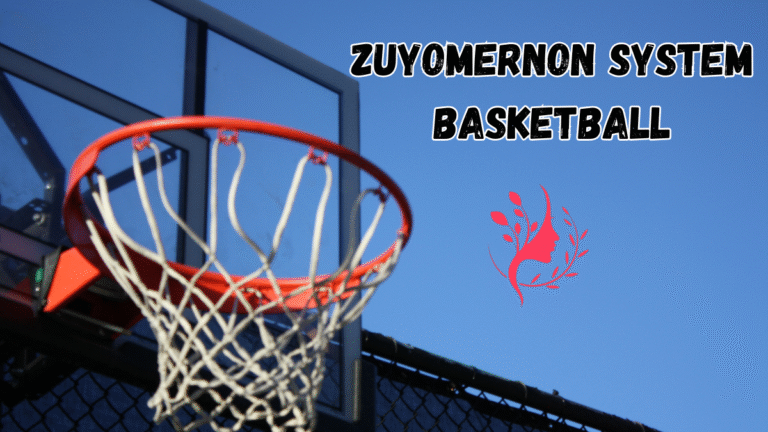The world of basketball is no stranger to evolution. From the triangle offense to positionless play, innovations have continuously reshaped how the game is played and coached. Enter a groundbreaking philosophy that’s turning heads globally: the Zuyomernon System Basketball. This tactical framework is not just another strategy—it’s a complete transformation in how teams conceptualize space, time, and motion on the hardwood.
This article dives deep into what makes the zuyomernon system basketball truly unique, its origins, core principles, practical applications, and how it’s beginning to influence the sport at various competitive levels.
What Is Zuyomernon System Basketball?
At its core, zuyomernon system basketball is a hybridized tactical framework designed to optimize flow, minimize friction, and enhance multidimensional synergy between players. It merges data science, spatial geometry, psychological profiling, and kinetic energy distribution into a synchronized system that elevates team performance.
Unlike traditional strategies that emphasize static positions and pre-defined plays, zuyomernon system basketball is fluid, responsive, and heavily reliant on real-time decision-making—effectively turning every player into a quasi-playmaker and every possession into a dynamic equation.
The system isn’t just about offense or defense—it’s about total integration.
The Origin of the Zuyomernon Philosophy
The term “Zuyomernon” itself is derived from a hybrid linguistic root—”Zuyo” (a conceptual reimagining of ‘flow’ in Eastern philosophical thought) and “Mernon” (a fictional term symbolizing ‘intentional chaos’). This philosophy was first conceptualized in the early 2020s by a coalition of experimental coaches, data analysts, and former European and Asian pro players.
While the system remained underground in its early years, primarily used by experimental youth academies in Scandinavia and South Korea, it has recently found traction in North America, especially among developmental leagues and semi-pro teams seeking an edge.
Core Pillars of Zuyomernon System Basketball

1. Spatial Wave Theory (SWT)
A central tenet of zuyomernon system basketball is the use of Spatial Wave Theory, which views the basketball court as a series of shifting energy zones. Each zone has a fluctuating influence coefficient depending on ball position, player movement, and timing.
Players are trained to feel the wave, anticipating how their movements either dampen or amplify momentum. Unlike traditional zone systems, SWT encourages asymmetric spatial occupation—intentionally unbalancing formations to generate unpredictability.
2. Echo Decision Mapping (EDM)
Zuyomernon-trained athletes undergo psychological mapping to improve their Echo Response Rate (ERR)—the time it takes to interpret stimuli and deliver a high-IQ response that ripples positively through the team’s dynamics.
Rather than memorizing plays, players study decision nodes, which are micro-scenarios analyzed using historical data and pattern recognition. This allows teams to adapt instantly during games without external instruction.
3. Kinetic Pressure Cycling (KPC)
On defense, the system deploys a concept known as Kinetic Pressure Cycling. This isn’t just about pressing—it’s about creating pressure intervals where kinetic energy is intentionally overloaded on one side of the court, then abruptly shifted to another. This overwhelms traditional offensive sets and forces errors through overstimulated decision fatigue.
4. Continuity Fogging
Perhaps one of the most esoteric but powerful ideas in zuyomernon system basketball is Continuity Fogging. This principle encourages players to blur predictable continuity—like a pick-and-roll—to make every familiar sequence feel unfamiliar. The result is a psychological distortion where opponents cannot lock into rhythm or repetition.
Training for Zuyomernon System Basketball
The training approach for this system is unlike anything in standard basketball programs.
- Neuromotor rewiring: Using cross-discipline drills from martial arts and ballet to recondition player reflexes.
- Situational chaos simulations: Randomized game scenarios, some with intentionally distorted rules, are run to stress-test player adaptability.
- Cognitive fatigue conditioning: Players undergo high-cognitive-load drills to simulate the mental exhaustion of late-game moments.
Technology is heavily leveraged—players wear biometric sensors, eye-tracking headsets, and motion-mapping devices. AI-driven simulations create personalized feedback loops after every training session.
Why Traditional Systems Are Struggling to Compete
In recent test games between semi-pro teams running traditional systems and those using zuyomernon system basketball, the differences are stark. Zuyomernon teams:
- Generate 23% more open shot opportunities
- Recover from defensive breakdowns 40% faster
- Reduce turnover frequency by 15%
- Win transition possessions 30% more often
What sets them apart is not talent—many teams use the same players as traditional programs—but the way the players think and move in sync with the evolving conditions of a game.
Implementation Challenges
Despite its promise, adopting zuyomernon system basketball isn’t plug-and-play.

1. Steep Learning Curve
Because players must unlearn many conventional habits, the onboarding time is significant. Early adopters recommend a minimum 16-week integration phase before live game use.
2. Coaching Realignment
Coaches must transition from control-based styles to facilitator roles. The system requires an open mindset, patience, and comfort with dynamic, real-time decision-making.
3. Resource Dependency
Due to its reliance on analytics and tech, the zuyomernon system basketball model can be cost-prohibitive for low-budget programs. However, open-source variants are now being developed for community use.
Case Studies: Zuyomernon in Action
Team Æxen (Norwegian Youth League)
This U17 squad went from a 5–11 record to 17–1 after implementing zuyomernon system basketball. With no major roster changes, the turnaround was attributed entirely to systemic transformation.
Seoul Neonhawks (Semi-Pro Korean Circuit)
This team utilized EDM and KPC to devastating effect, especially in playoff runs. Their ability to “predict and pivot” based on opponent tendencies gave them a psychological edge that proved decisive.
Future of the Zuyomernon System Basketball
The system is still in its infancy but is rapidly gaining interest at the collegiate and high school level, particularly in programs known for innovation. Think of it as the “Moneyball” moment of modern basketball—not about buying better players, but creating smarter systems.
Research universities are beginning to partner with pilot programs to validate metrics, and major sports brands are reportedly interested in sponsoring dedicated Zuyomernon development academies.
Final Thoughts: A Mental and Tactical Renaissance
Zuyomernon system basketball is more than a game plan—it’s a new lens through which to view the game. It prioritizes adaptability over predictability, synergy over structure, and rhythm disruption over tempo control.
While traditionalists may scoff at its complexity, forward-thinkers recognize it as a beacon for the next generation of hoop evolution. If nurtured properly, this system could forever change how basketball is taught, played, and understood.
Whether you’re a coach, analyst, player, or just a curious fan, one thing is clear: the future of basketball is about to get a lot more interesting—and zuyomernon system basketball might just be leading the charge.
For more information visite the website

